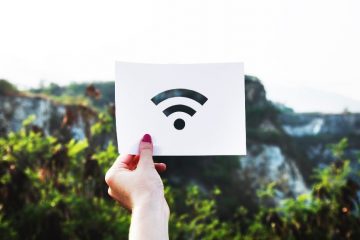Fun Ways to Keep in Touch with Family and Friends While Traveling
Don’t Forget Where You Came From
Gone are the days of telegrams and airmail: even postcards are going out of style. What hasn’t changed though, is that your friends and family at home will always want to hear about your travels when you disappear overseas. It’s also good for your own mental health, giving you even more incentive to contact your loved ones.
Fortunately, although the romance of handwritten letters may be behind us, staying in touch when you’re hundreds of miles from home is now easier than it has ever been. All you really need is a smartphone and an internet connection.
Throw in a few well-chosen apps and you have a variety of methods to keep in touch with loved ones. The only other thing you need is the dedication to set aside some time to let your family know you are okay.
So what works best? What’s easiest? Fastest? Keeps your mom happiest?
Let’s take a look at some of the ways long-term (or even weekend) travelers can keep in touch with friends and family at home.
Skype
Skype is one of the best ways to stay in touch while traveling. Hostel living areas usually have at least one backpacker plugged into their laptop, regaling their family back home with tales of their latest adventures.
Offering free video calling, Skype is great because your family can actually see you, and vice versa. Seeing your face will definitely make your mom happy, and reassure her that you are alive and well, despite your escapades.
It’s completely free if you are only Skyping from one computer to another. You can also use it to call cellphones and landlines, which isn’t free, but is still very reasonably priced.
It enables you to stay connected to family that may not necessarily have access to a computer with a webcam (or just don’t know how to use it — don’t forget, your grandparents would love to hear from you too!).
The only catch is you need a reliable internet connection, more so than other forms of communication. Skype has a habit of dropping in and out if the connection is not fast enough, which can be an exercise in patience for everyone involved.
You also need to do a little forward planning: Skype dates usually have to be penciled in at least a couple of days in advance. When calling across time zones, figuring out a time that works at both ends can be tricky, especially if you are spending your nights out exploring the nightlife, and mornings sleeping off the night before.
Ah, the classic electronic mail. Having largely replaced the good old fashioned art of letter writing, emails are a fast and convenient way of keeping in touch with family overseas. Almost everyone has an email address these days, so this is an effective way of reaching people who may not have a smartphone or some of the more recently developed messenger services.
Email is a quick and easy way to stay in contact. You can write as much or as little (but not too little) as you want.
If you are planning about writing about your travels anyways, this can be a great way to compile a first draft and improve your travel writing.
You can type out replies whenever you get the chance; it’s a good way to fill time when you are waiting for your next flight, or on a bus to somewhere new. One of the huge benefits of emails is that you only need internet to actually send them — so you can tap out your messages offline, and then hit send once you find WiFi, saving you valuable internet time.
You can compile email lists, or Bcc in the whole family if you want, so your one email will reach dozens of family members (even if you don’t Bcc them in, you’ll probably get forwarded on to every living relative anyway). Plus you can add a few photos to each message, to give the folks at home a visual of what is going on with you.
There are no significant drawbacks to using email, except that it is not as instant as other (internet-based) forms of communication. Oh, and good luck getting into your account if you are unlucky enough to forget your password…
Do you know about travel WiFi? Read on to learn about the what it is and how you can use it to stay connected with anyone, anywhere.
Send a Postcard from an App
Actually buying, writing on and sending a postcard might be a dying practice, but the romantic idea of receiving a postcard is being given a modern makeover.
You can now send postcards from your phone, with the help of the right app. You can turn the photos in you phone’s gallery into a sleek, personal postcard with just a few taps.
It’s like sending Snapchats, but in paper form. Retro, right?
Some of these apps include Postino and Touchnote. Your family still gets the excitement of getting physical mail from you, and, even better, it is a snapshot of your actual travels. This is also a cool way for your parents and other family members to see your photos if they don’t have Instagram.
This is a relatively inexpensive way of communicating. After the minimal initial cost of the app, there will be a small fee each time you send a card.
The only downside is you can’t exactly write a lot, and you’re only sending one photo at a time. It’s not as nice as a postcard that was written by the seaside and still smells like salt air and maybe has a few grains of sand trapped in the ink, but it does have a sweet, personal touch.
Facebook and Instagram
Social media is one of the easiest, cheapest and most obvious ways of staying in touch with people. Don’t deny it, you’re on there pretty much every day anyway.
Why not just use the time you’re checking Facebook to check in with your parents? Being faster and less formal, Facebook messages are doing to email what email did to letter writing.
As well as checking into your latest location, you can also start an instant messaging group on Facebook and add all of the family members you have in your Friends list. It’s more conversational than writing out a whole email (so it takes less time to flick off a few messages updating people – no excuses not to maintain contact).
You are more likely to sustain an ongoing conversation this way, and it’s also a nice way of sharing photos or videos that you took on your phone. If you really want to get creative you can always make some travel vlogs and upload those to your Facebook too!
Of course, this is dependent on your loved ones actually having Facebook (or if you allow them to be Friends with you).
Instagram is a great way of curating your travel photos, and letting people live vicariously through you. Older generations probably won’t have jumped on the Insta bandwagon though, so this is probably better for letting friends know what you’re up to.
Phone Calls
Do like E.T. and phone home once in a while. Yes, it seems old-fashioned, but just talking to someone over the phone is one of the simplest and most direct ways of communicating. Plus, you are not tethered to WiFi. As unbelievable as it sounds, there are also instances when you cannot achieve something over the internet, and making a phone call is imperative.
This applies mostly to phone calls to banks, insurance providers and other emergency-related contacts, but it can also be invaluable being able to call home on important dates whenever and wherever you are, regardless of the availability of internet.
Plus if you have an exciting experience to relate, sometimes typing it out just won’t do it justice. If you want to make sure you get it right over the phone, use these storytelling tips when recounting your travels to those back home.
Calling cards and phone booths still exist (improbably — although they are usually found inside internet cafes now) but an easier route to using a cell phone while overseas is often to either activate roaming on your mobile, or to buy a local SIM card. Many telecommunications companies have special rates when it comes to international calling, which can range from obscenely cheap to obscenely expensive, depending on where you are calling from and to.
The trick is to research (thoroughly) all charges, and if you plan on buying a SIM overseas, verify if your phone is unlocked before you go. And if there are extremely high costs for using data overseas, make extra sure to disable data before you arrive, to avoid any unpleasant shocks when you get your statement.
Take it from someone who learned the hard way.







